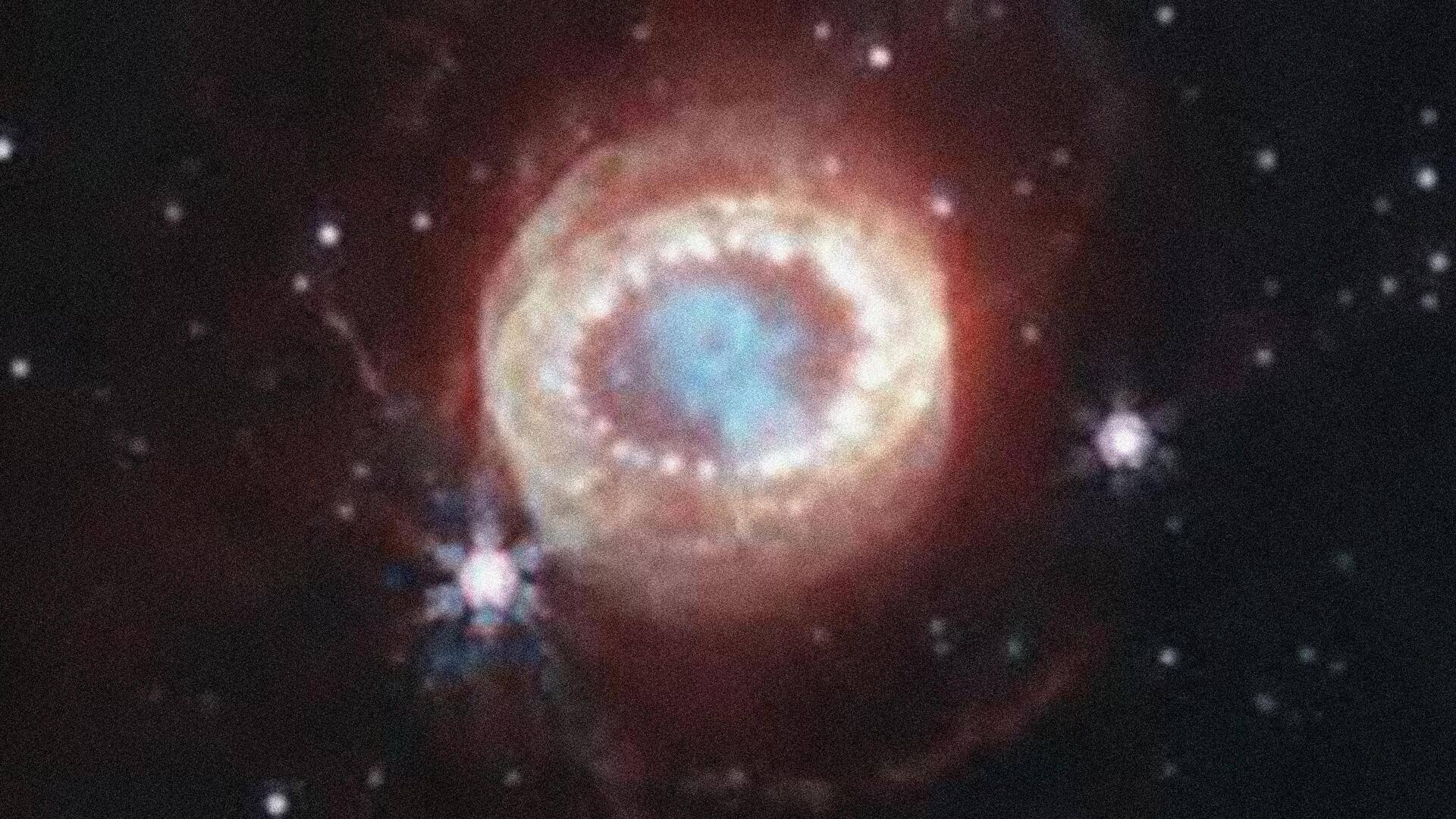
JSWT's latest image reveals stunning details of expanding supernova remnants
What's the story
The James Webb Space Telescope (JWST) has captured a striking image of SN1987A, a supernova in the Large Magellanic Cloud, just 170,000 light-years away from Earth.
This historic supernova, which exploded in 1987, marked the nearest and brightest such event visible from Earth in almost four centuries.
These findings offer valuable information about the behavior of supernova remnants and their interactions with circumstellar debris.
Details
Revealing the 'string of pearls'
JWST's image of SN1987A, often referred to as "string of pearls," unveils a series of luminous rings composed of gases and dust expelled during the dying star's stages of collapse and explosion.
These luminous rings, bathed in the light of the star's last moments, offer a mesmerizing cosmic spectacle that enchants both astronomers and stargazers.
Insights
Unprecedented clarity and detail
What sets this observation apart is the unprecedented clarity and depth that the JWST brings to the image.
"We're able to see new hotspots emerging outside the ring that has previously been illuminated," said Dr Roger Wesson from Cardiff University, UK.
"In addition, we see emission from molecular hydrogen in the ring that was not necessarily expected and something only JWST could have revealed with its superior sensitivity and resolution."
Insights
A necklace of cosmic material
The necklace-like arrangement of pearls comprises material ejected approximately 20,000 years before the supernova event.
The JWST's sharp telescopic vision also reveals new features within the necklace, including crescents or arcs of emission. These crescents pose an intriguing mystery for astronomers.
Dr. Mikako Matsuura, who led the analysis, noted, "We don't really understand the crescents yet."
He suggests that this material might be illuminated by a possible reverse shock, implying a shockwave moving in the opposite direction, toward the keyhole.
What Next?
JWST's quest for the elusive neutron star is on
The next step for JWST is to continue monitoring the evolving supernova remnant and search for the elusive neutron star at its center.
By observing these celestial phenomena, scientists hope to gain a deeper understanding of the life cycles of massive stars and their explosive ends.
With its advanced capabilities and potential operational life of up to 20 years, astronomers anticipate that JWST will provide invaluable insights into SN1987A's ongoing transformations.